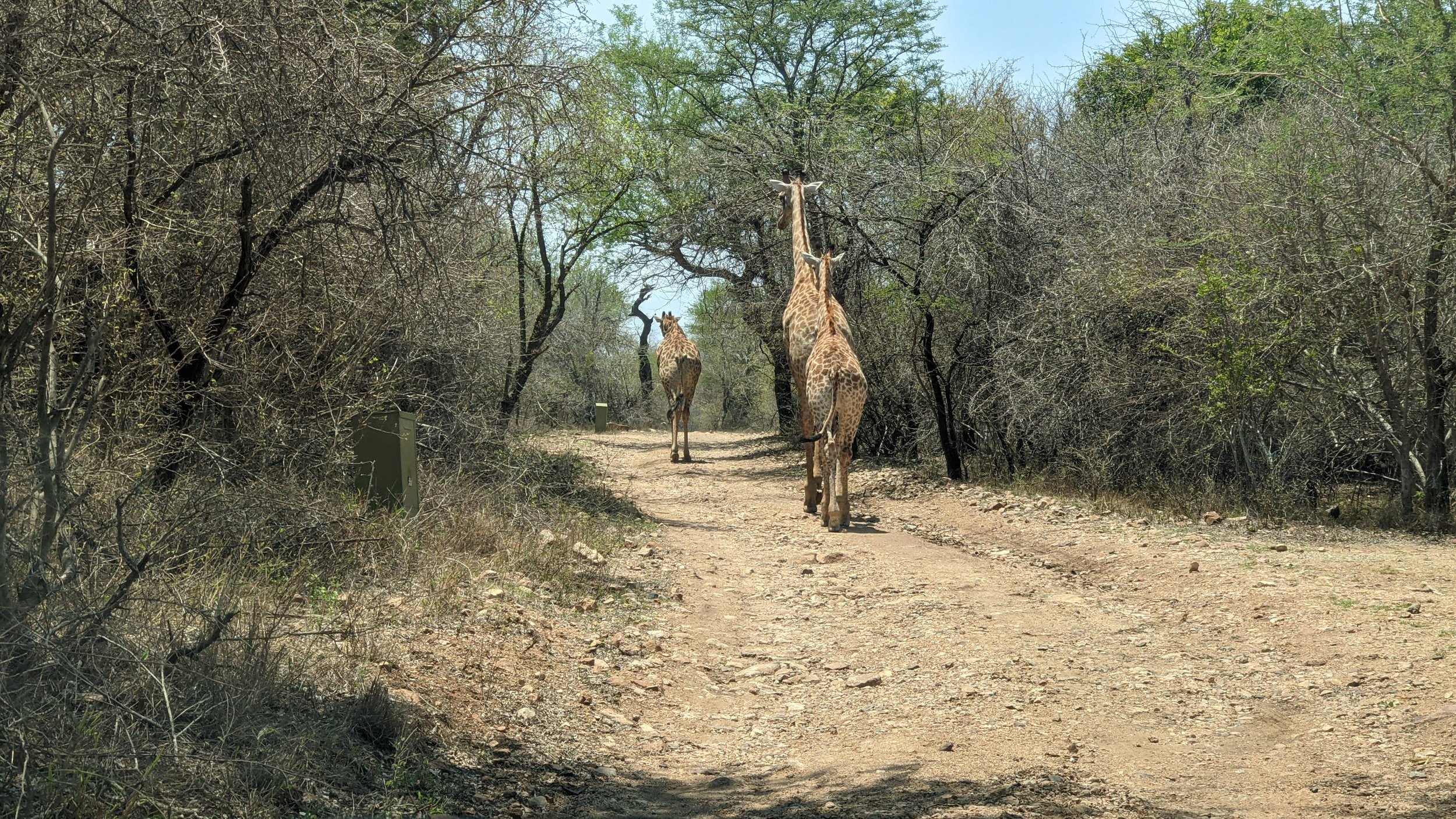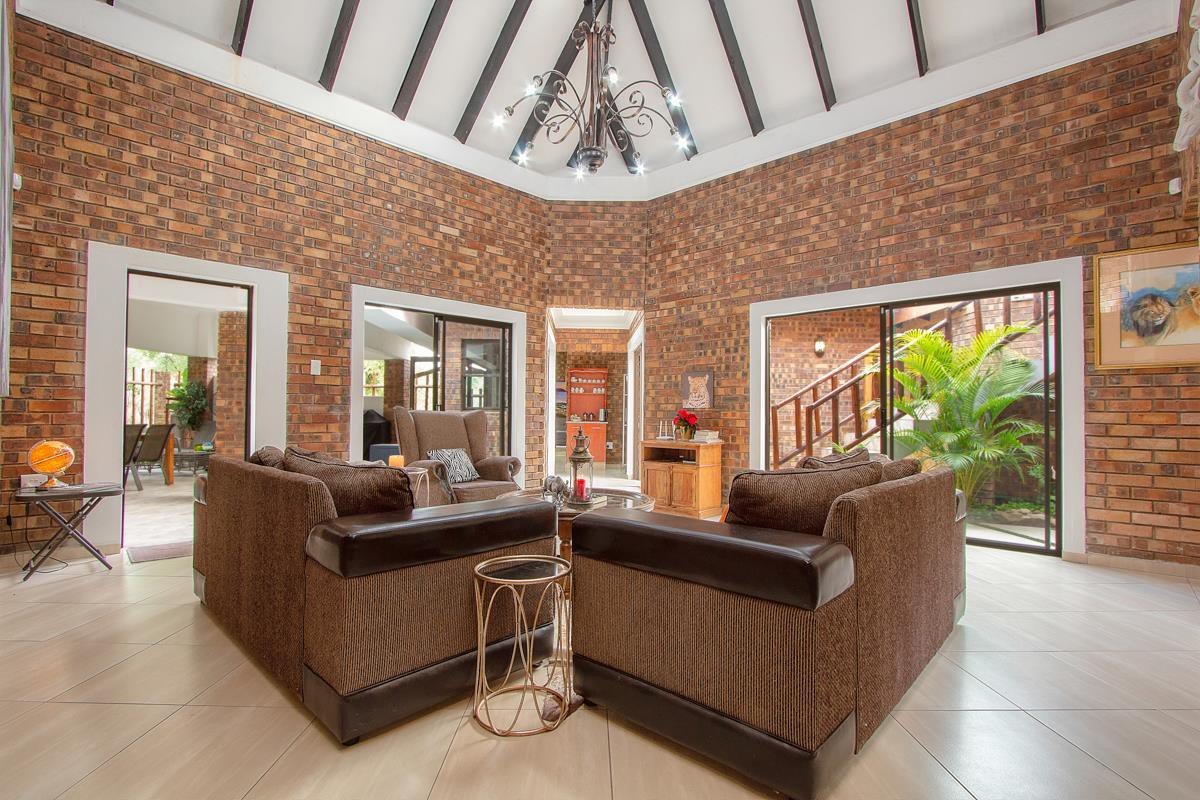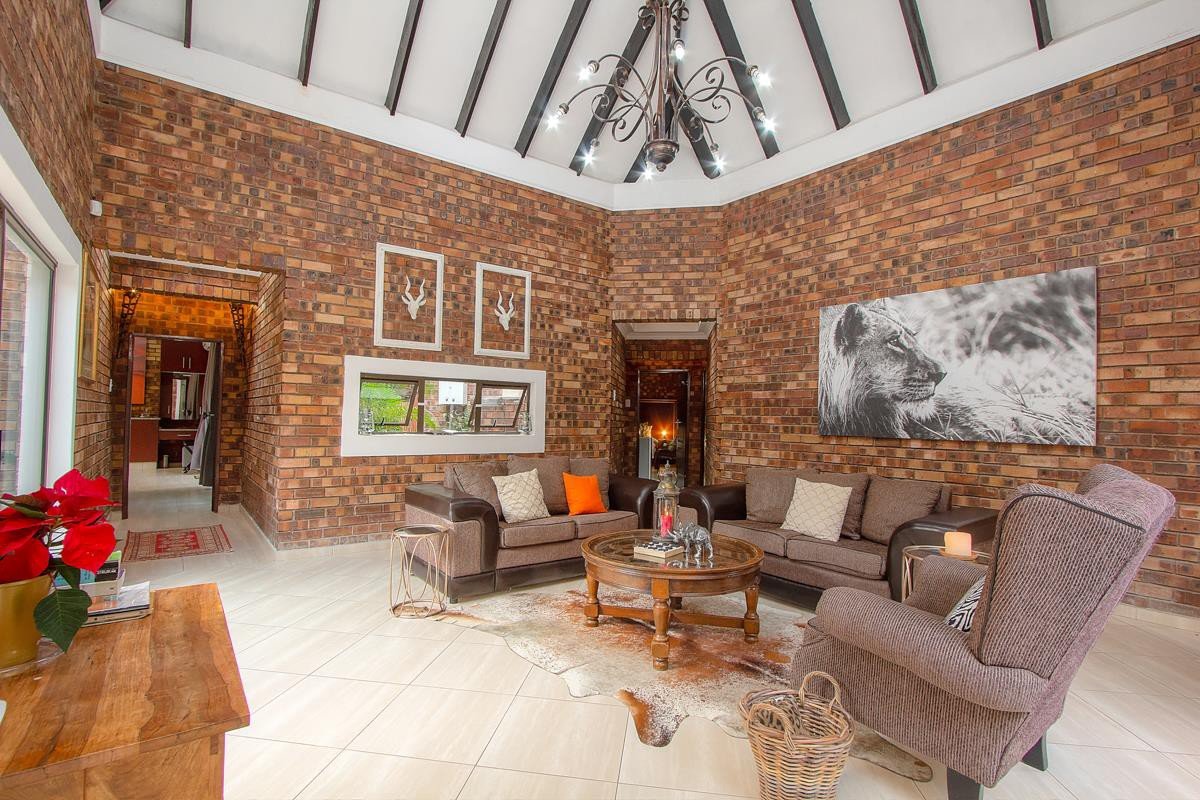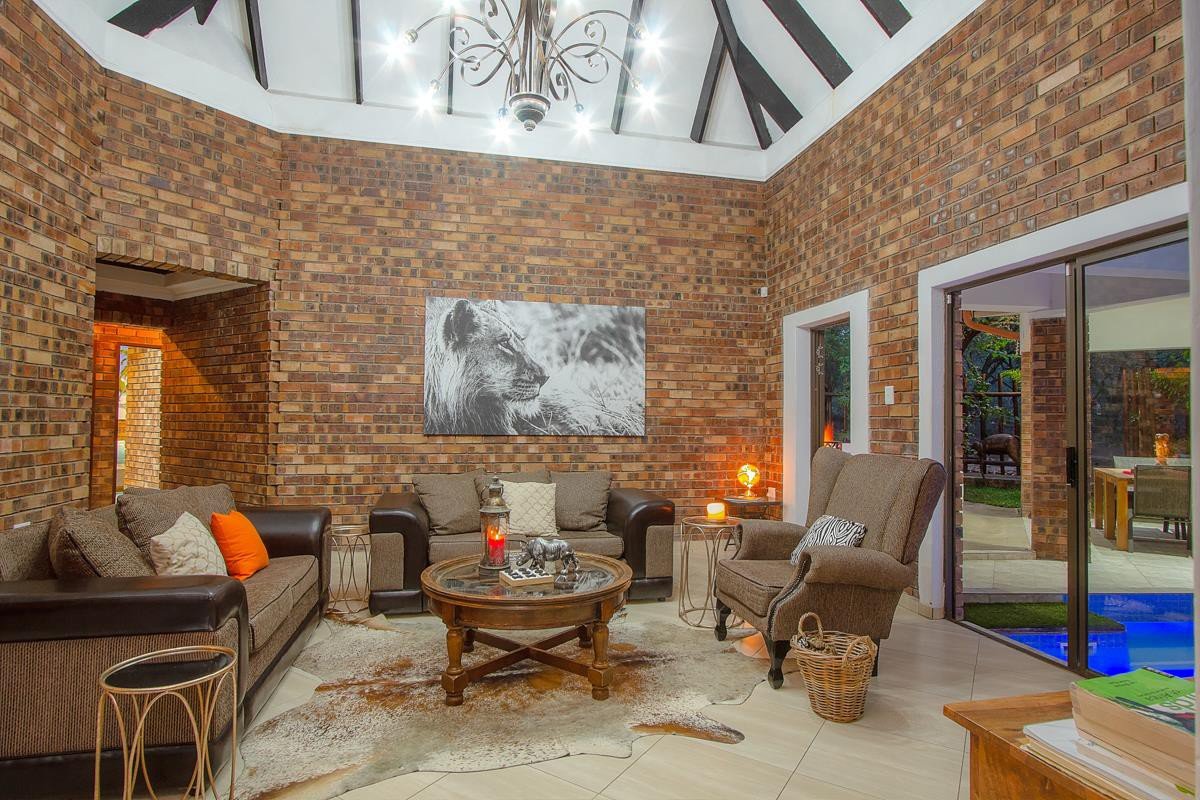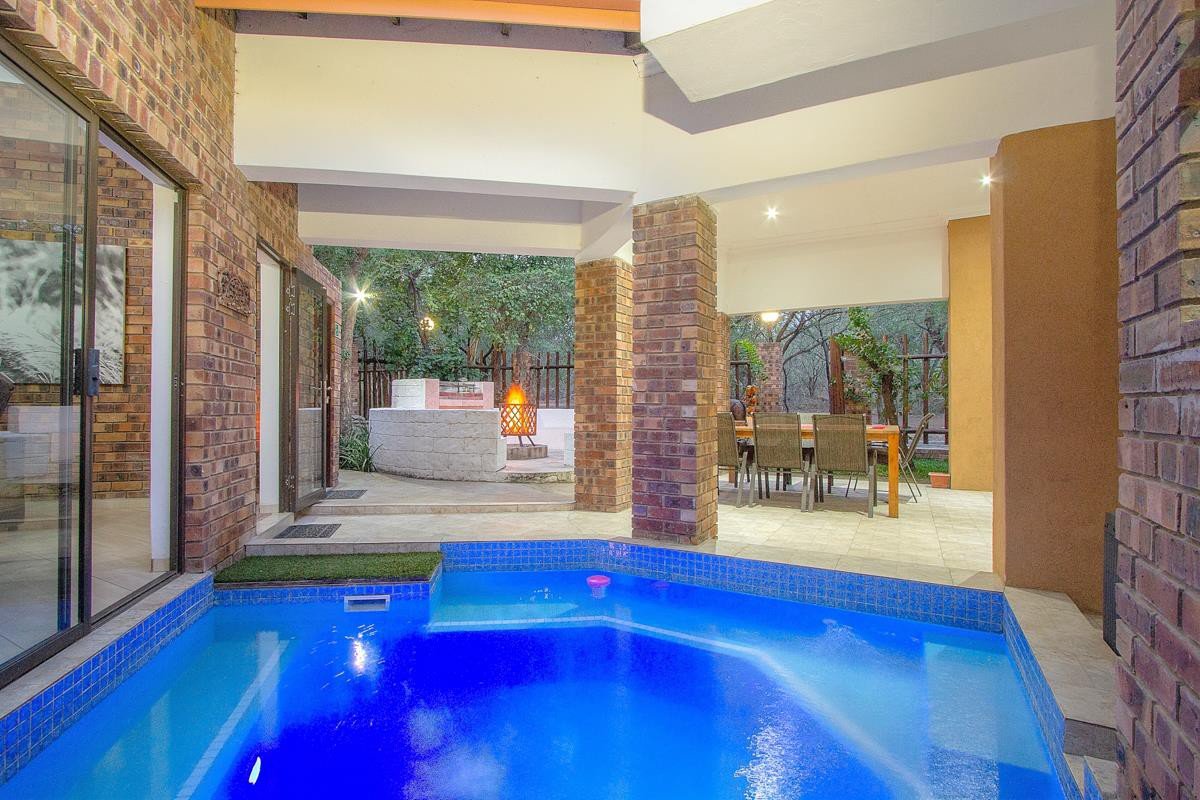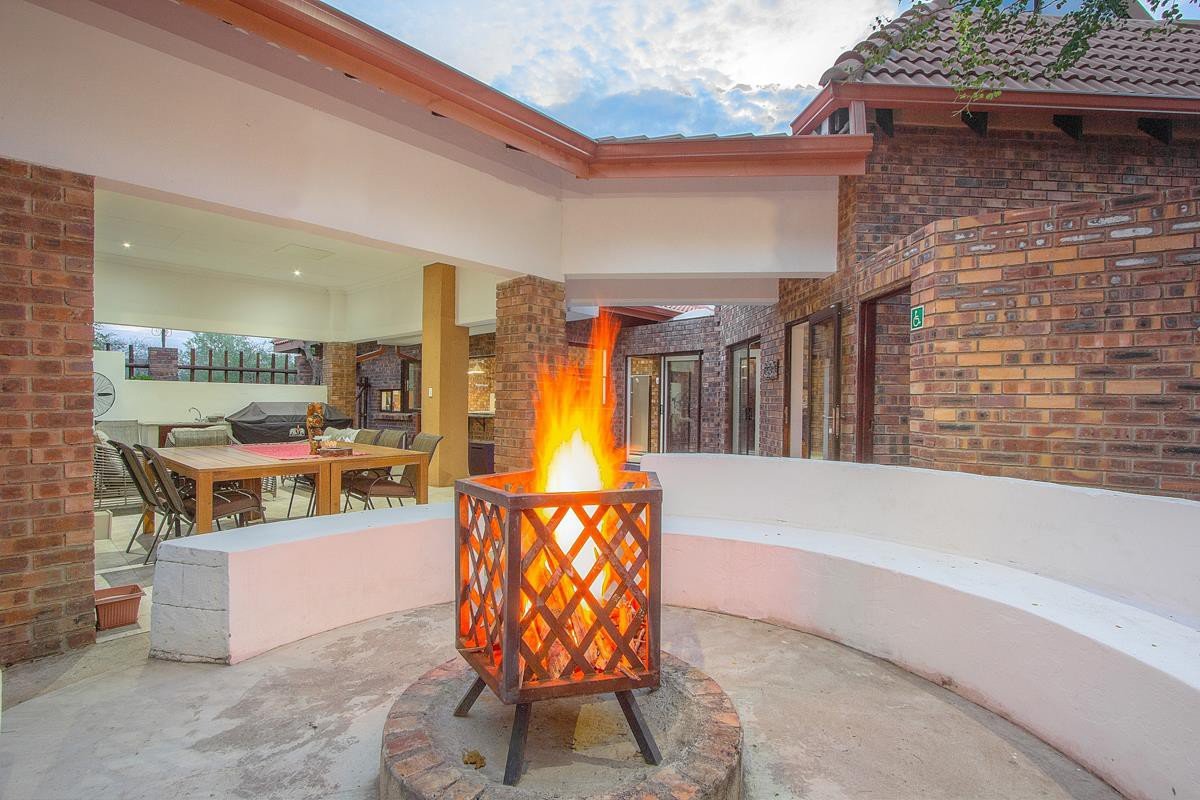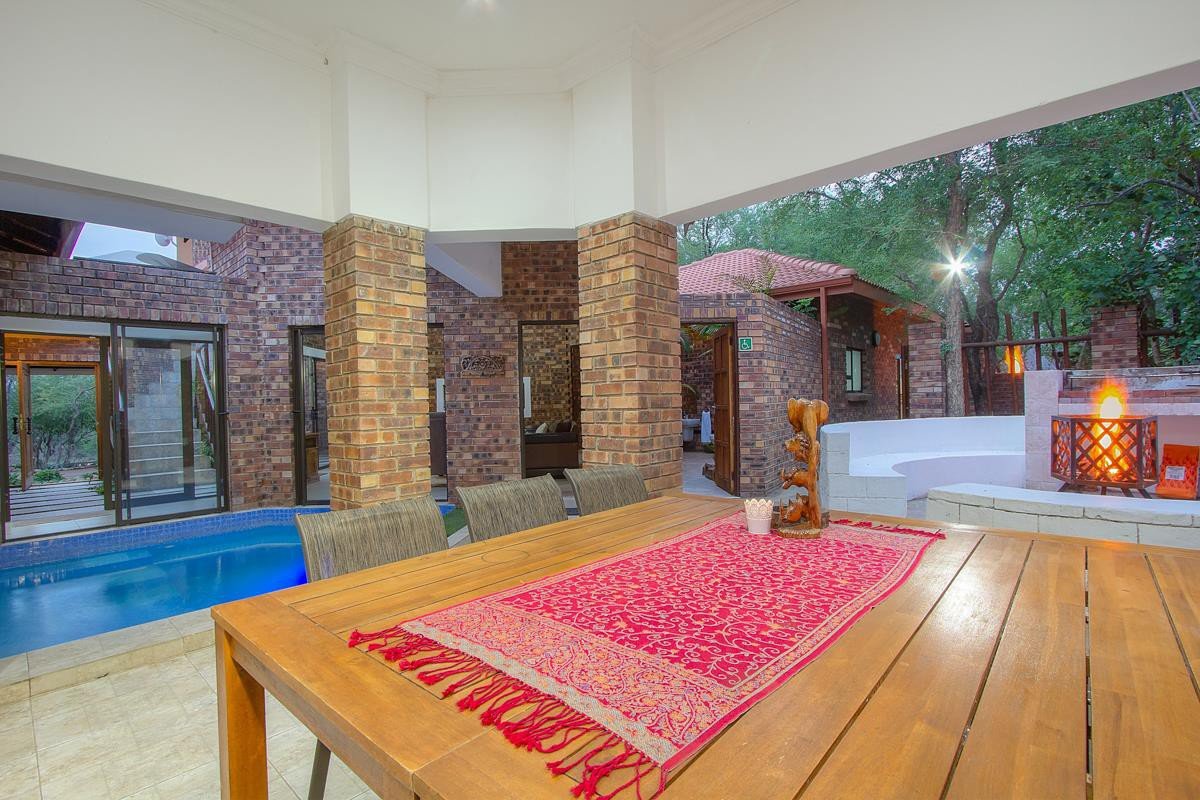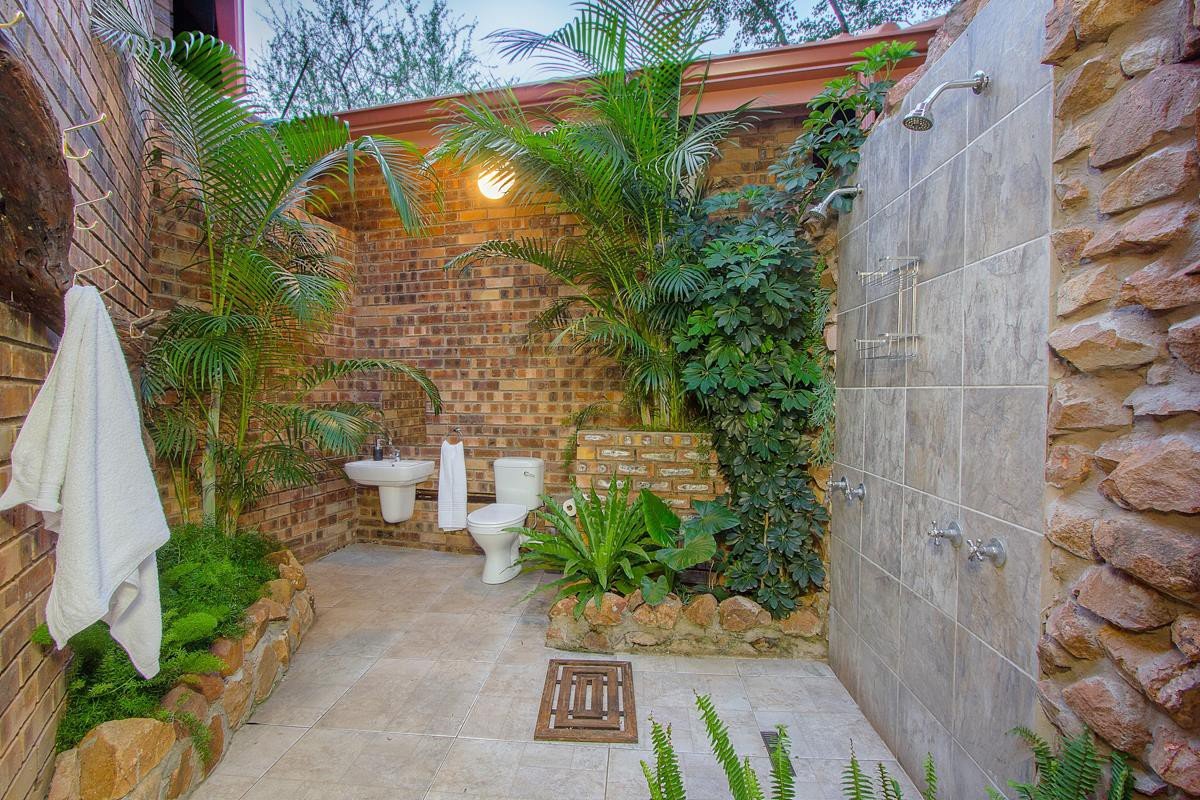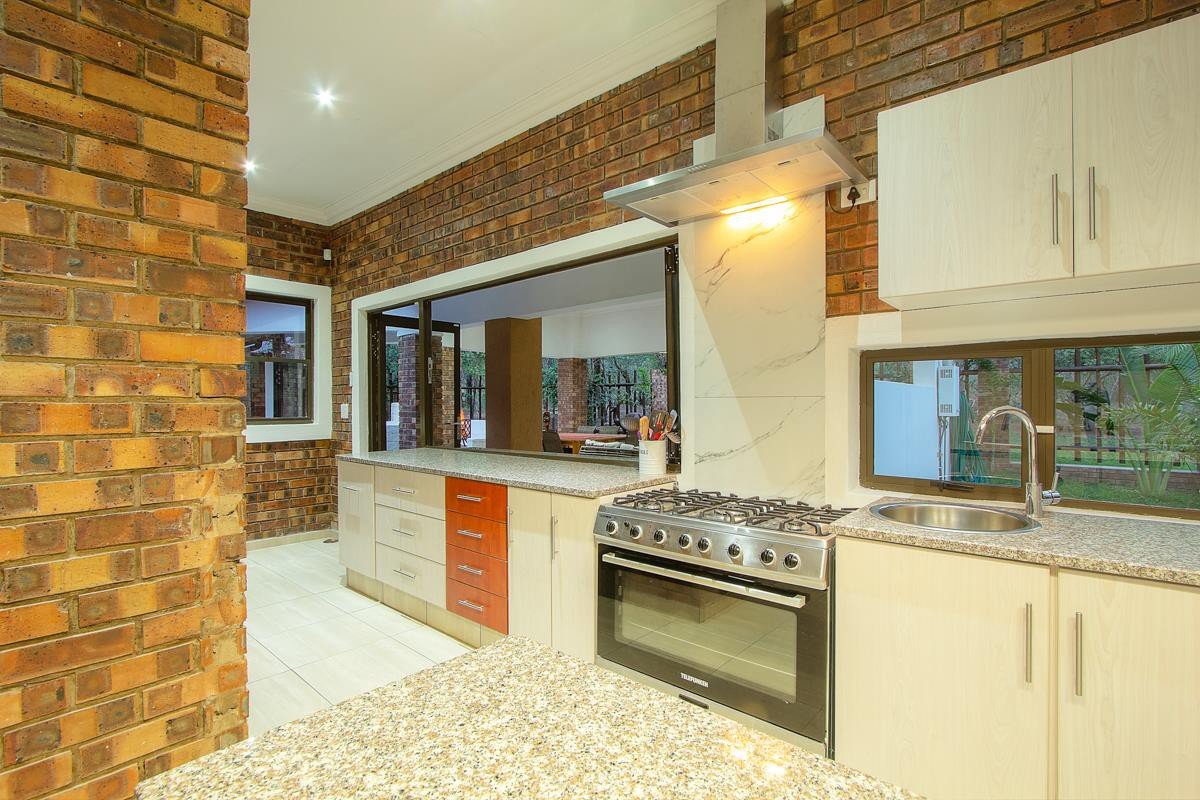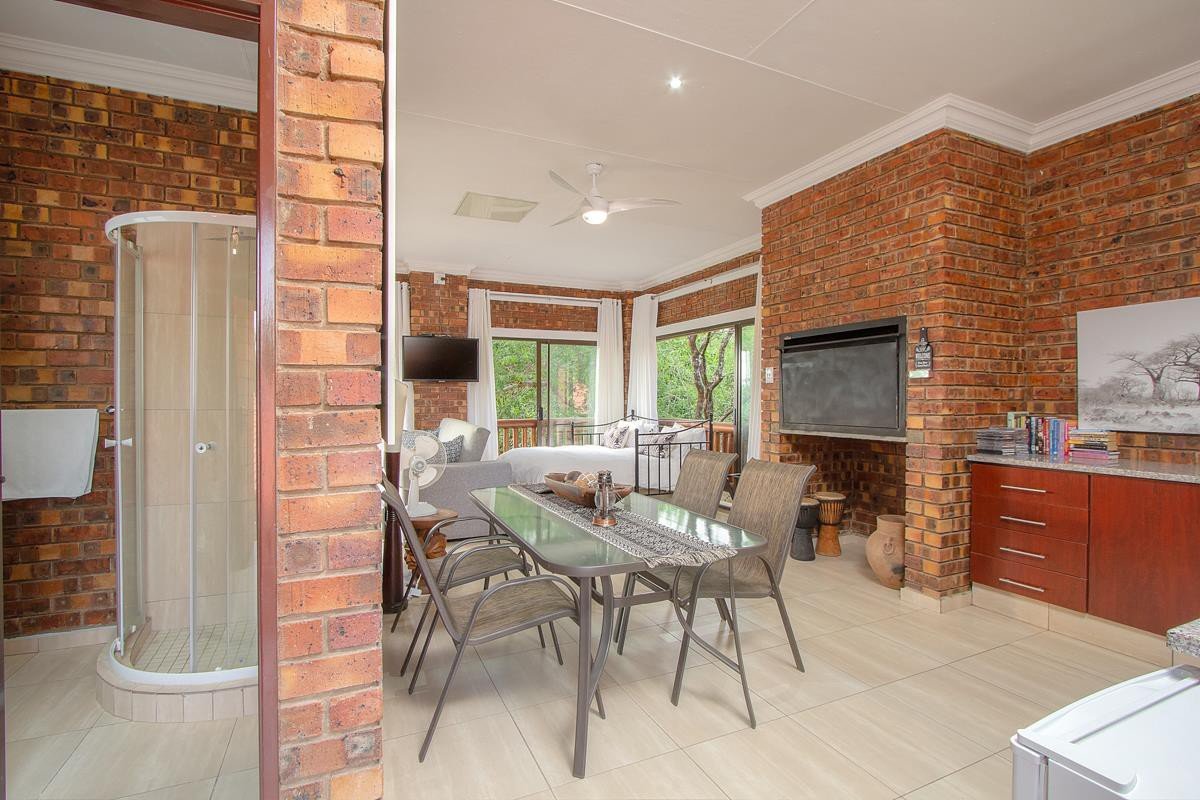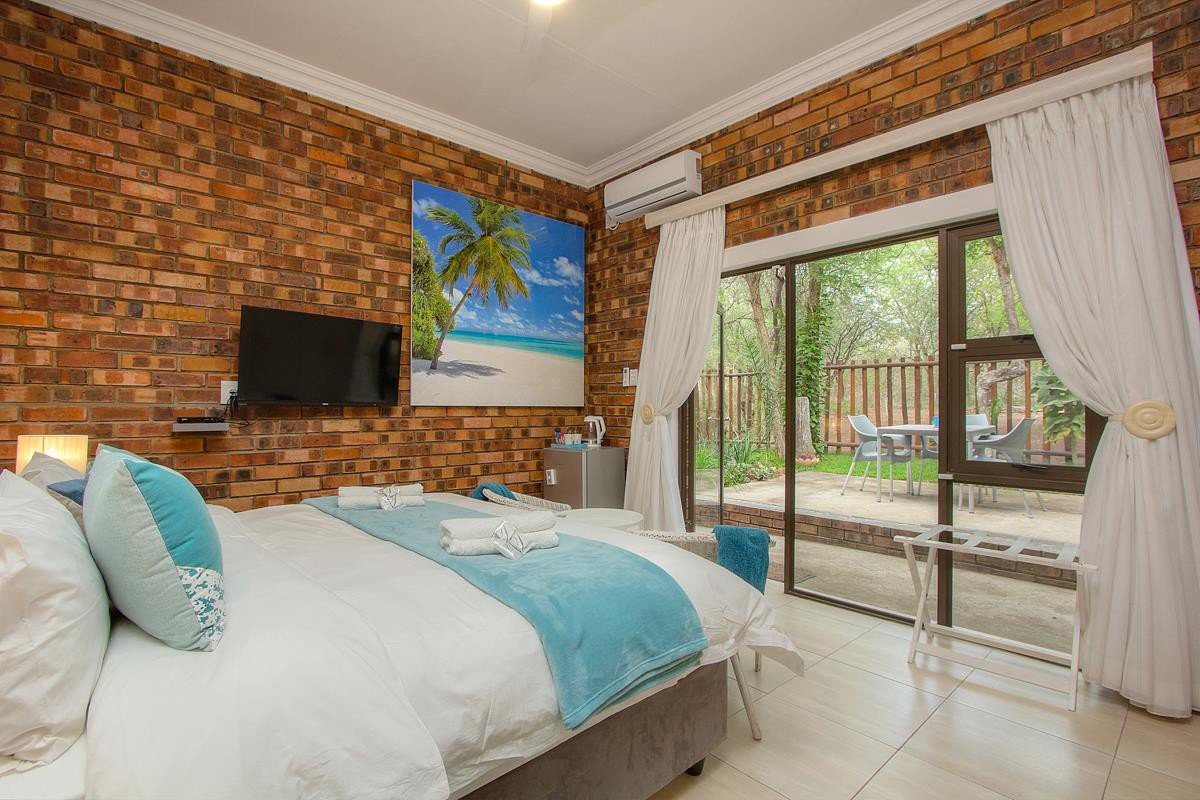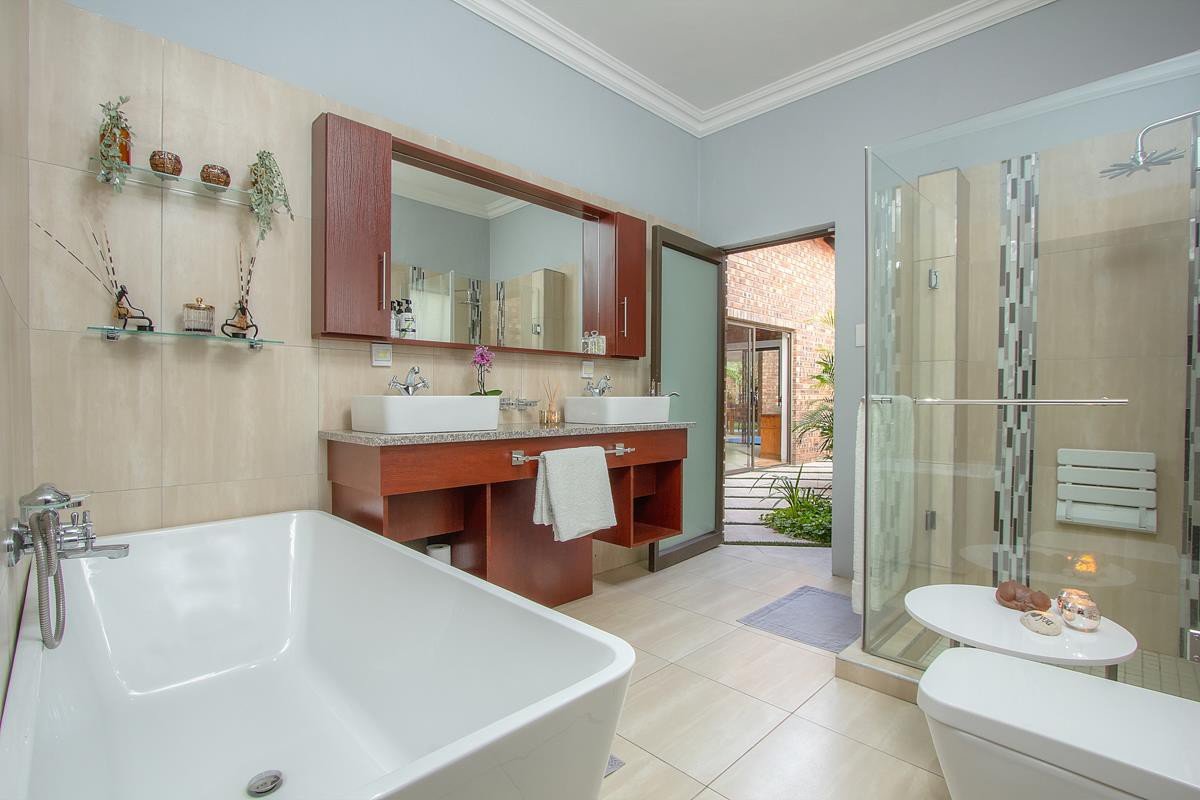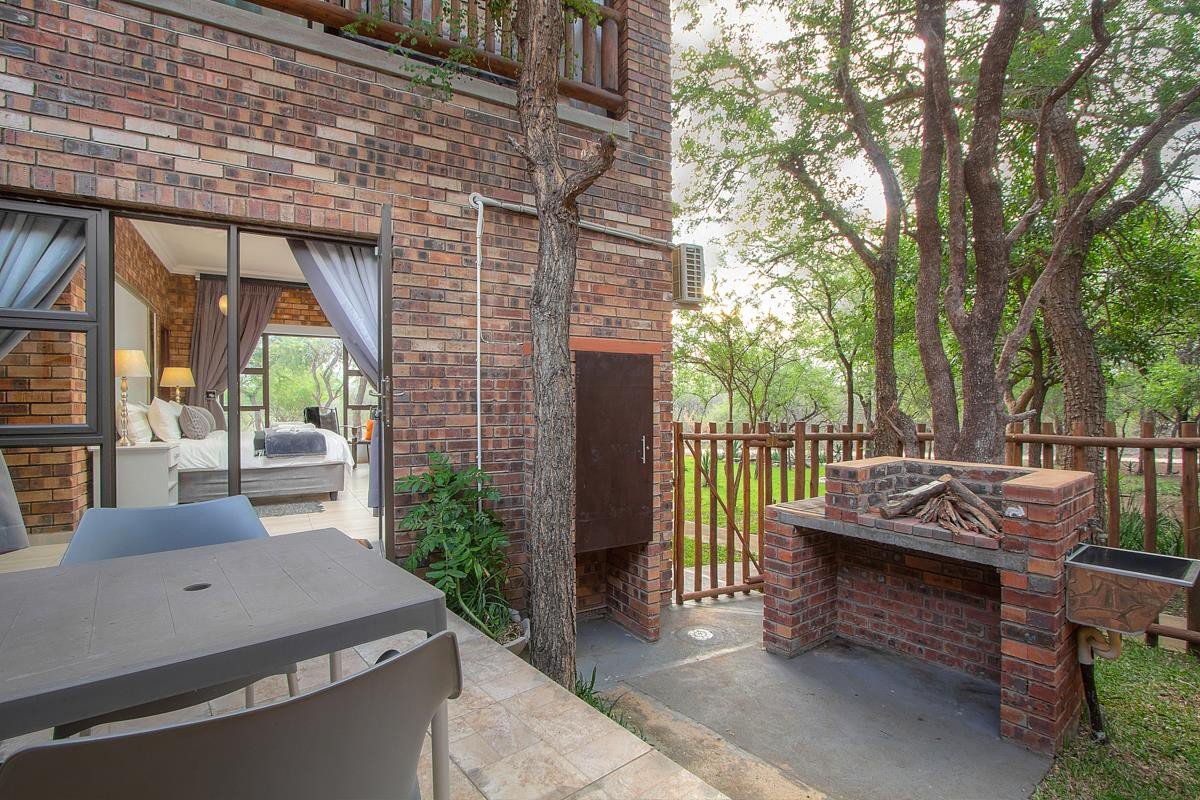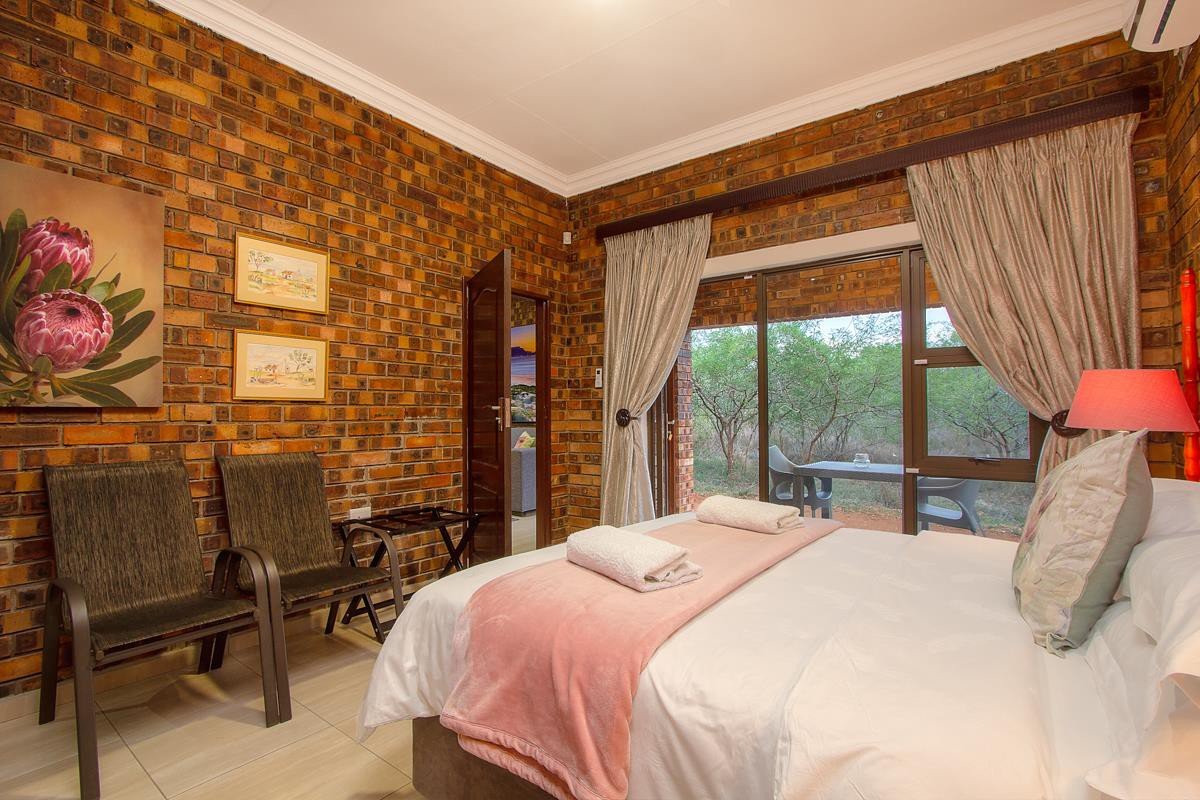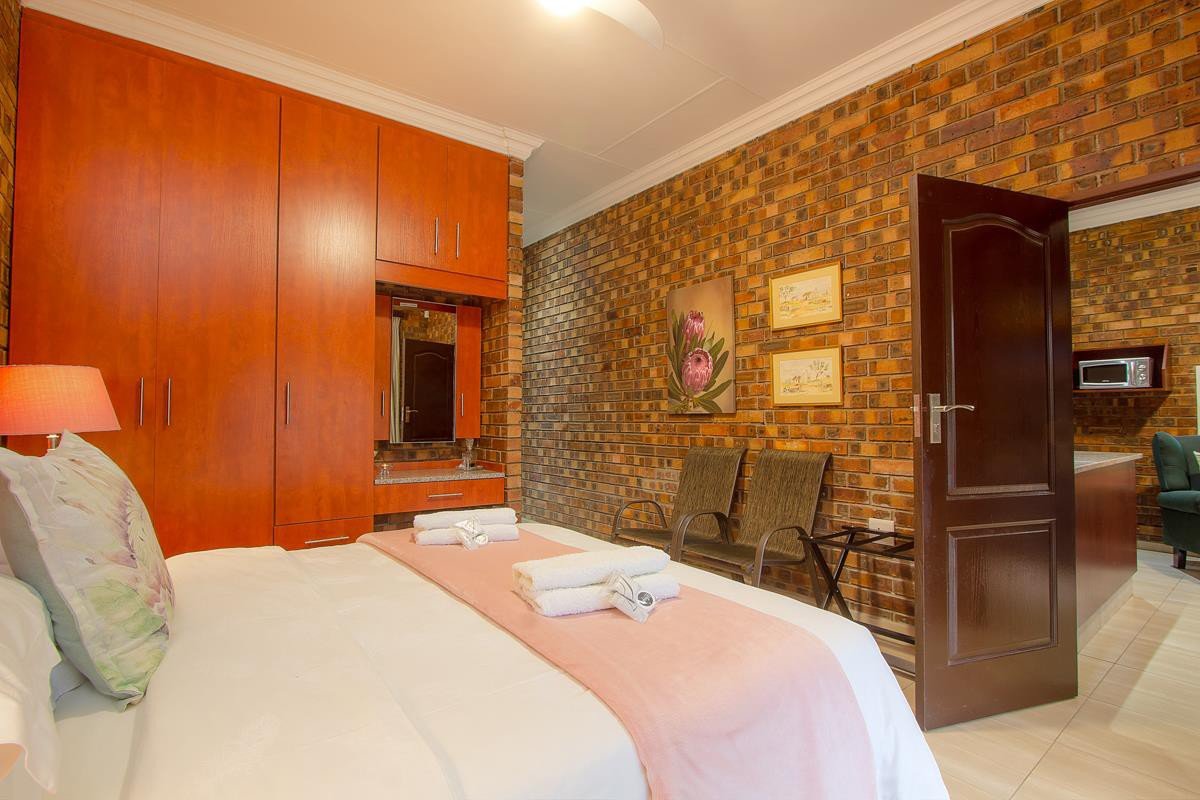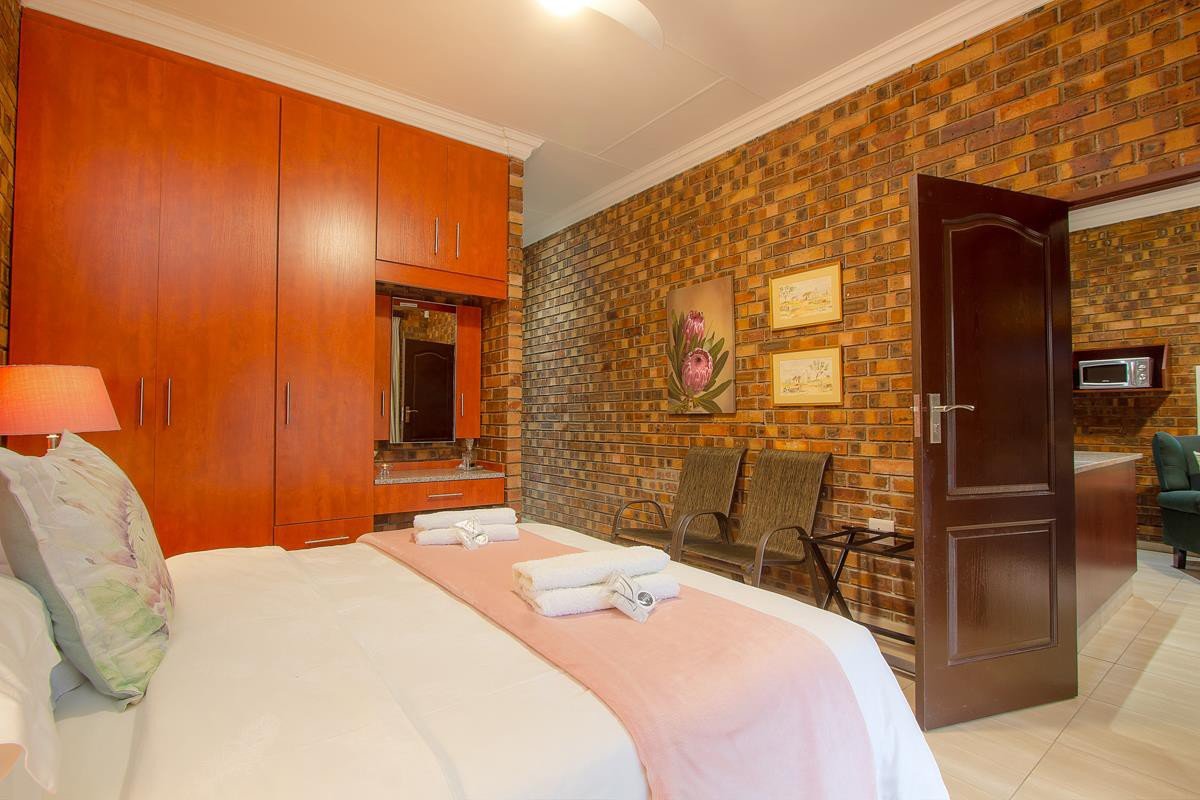So You Want To Visit Us In South Africa...
(Updated October 9, 2023)
Ever since we decided to buy a house neighboring Kruger National Park in Marloth Park, South Africa, we’ve had a number of friends, family, and acquaintances expressing excitement about visiting us there. If you count yourself among those wanting to see how awesome this place is for yourself, this is the blog post for you.
Where Is Our Home?
Our house is located in the town of Marloth Park, South Africa, about a thirty minute drive to the Crocodile Bridge gate to Kruger National Park. Most importantly, it’s about a thirty second walk to the Crocodile River which serves as the border to the park. All the homes in Marloth are on lots of about half an acre or more and many back to designated parkland within Marloth Park. All of the roads are dirt except for the main road into and through town. It feels very private and wild, even when there aren’t wild animals around!
Marloth has two small grocery stores, a few restaurants, and a few other shops. Most everyday essentials are available just a few minutes from our house without leaving town. They’re a bit too far to walk, although they would be reasonably bikeable. The town of Komatipoort, on the border of Mozambique, is also about thirty minutes by car. There you can find a couple of large, modern grocery stores and some other shopping. Ninety minutes away is the modern city of Mbombela (often still referred to by its previous name of Nelspruit) where shopping and services not available closer to Marloth can be found. This is also where you’ll find the nearest commercial airport.
What’s There To Do?
Kruger National Park
Kruger National Park is the primary attraction in the immediate area. It’s entirely possible to self-drive, but game drives led by professional guides are available, as well as other activities in the park. Self-driving gives you the most flexibility, of course, and is certainly the cheapest option. The professional safari guides can drive in places the public isn’t allowed and know the best places to look if you want to see specific animals. They’re also very knowledgeable about the animals, which certainly makes the visit more interesting. However, we’ve seen all of the Big Five in one day of self-driving, amongst many other animal sightings. There are a couple of rest areas inside the park where you can get some lunch, souvenirs, or snacks. You can also find maps with recent wildlife sightings marked to give you ideas of where to go.
Just another walk in Marloth Park
Around Our House
Of course, we have many wild animals that will visit you in our backyard and around the neighborhood: giraffe, zebra, kudu, bush buck, impala, monkeys, warthogs, ostriches, mongoose, bush babies; and yes, you might see snakes, scorpions, and even lions. The short walk to the river also offers opportunities to see elephants, lions, crocodiles, hippos, and more. (A tall wire fence keeps the most dangerous animals safely inside the park).
We’ll be sure to have a South African braai for you in our outdoor fire pit by the pool. If you’re visiting with kids, Marloth Park even has a small waterpark.
Panorama Route
You can drive the Panorama Route over a few days and visit scenic sights like God’s Window (as pictured here), the Blyde River Canyon, several waterfalls, and more. We did this on our first visit to the area and returned to Marloth driving through Kruger, which was an outstanding experience.
Is It Safe?
Wildlife
The back of that kudu is about as tall as Carrie! Fortunately, they’re not aggressive and even tried to eat right out of our hands (which we do NOT encourage!).
Yes, it’s true that you may encounter dangerous snakes, lions, leopards, and other animals in Marloth. However, this is very unlikely. While we’ve never seen a big cat in Marloth ourselves, we hear them, see their tracks occasionally, and have even caught a leopard on our security camera. There are dangerous snakes as well, but it’s rare to see them. Of course, any wild animal can be dangerous under the right circumstances. However, if you exercise reasonable caution around them there’s little risk.
If you’re bringing kids, note that our backyard is fenced in to keep the larger animals from coming into direct contact while enjoying the pool, fire pit, or outdoor lounging area. However, young children would need to be supervised even in the fenced area.
There is plenty of opportunity to sit outside and enjoy the random wild animals that wander through our yard.
Crime
South Africa does have something of a reputation for crime. However, if you take reasonable precautions it’s very unlikely you’ll experience anything in our region. Avoid driving on the highways at night, be aware of your surroundings, and avoid visiting areas not frequented by tourists. Of course, in the cities you’ll need to practice the same kinds of safety as any large city to protect yourself from scammers and pickpockets. Our house does have a security system with armed response, which is standard for the area as break-ins can happen—most often in houses without security systems or with occupants who forget to turn them on.
HOw Do I Get There?
Although it's certainly possible to come to South Africa by car or even by cruise ship, for most people flying is the only practical means of transport.
Sample itinerary from Denver to Nelspruit via non-stop Newark-Johannesburg flight on United Airlines
Flying To Marloth Park
From the U.S., there are basically two ways to fly to South Africa: non-stop or connecting in Europe/Northern Africa. To fly non-stop, United Airlines operates non-stop flights between Newark, NJ (NYC) or Washington, DC (Dulles) and Johannesburg; and Delta Airlines operates a non-stop flight between Atlanta and Johannesburg/Capetown. These flights are long—about fifteen hours—and tend to be more expensive than the options connecting through Europe or Northern Africa. This is, however, by far the fastest way to get there and the least complicated with less risk of delays or missed connections. A fifteen hour flight may be intimidating, but it’s nowhere near as painful as you might think and if you’re able to sleep on planes it goes by quicker than you imagine.
Sample itinerary from Denver to Nelspruit via Newark and Frankfurt. Back-to-back red-eye flights but usually cheaper.
Most of the major airlines offer connections throughout Europe and Northern Africa either themselves or through a partner airline. However, virtually all of these options are back-to-back red-eye flights. This means that you’ll have an overnight flight from the U.S. to Europe (or Ethiopia, Egypt, Qatar, or UAE), then a long layover for most of the day followed by another overnight flight to Johannesburg. However, there's a decent chance that you’ll have a layover long enough to do a tour of the city before your connection.
But Wait, There’s More
Here’s where things get a little complicated. You can fly to Johannesburg and drive about six hours to our house. This is the most well-traveled highway route in all of South Africa and is quite safe with well-maintained roads. I wouldn’t recommend driving at night, however, as a safety precaution. So if you do this and land in Johannesburg later than early/mid-morning (or if you don’t sleep well on planes), you’ll want to spend the night in Johannesburg before setting off for Marloth. However, I don’t think the drive is very noteworthy and this wouldn’t be my recommendation.
Another option is to take a shuttle bus. While we haven’t used it ourselves (yet), many visitors and residents of Marloth Park take a shuttle bus offered by JSL Shuttle & Tours. Although it’s about a six-hour ride, I’ve been told it’s quite comfortable and I believe it stops about halfway where there is ample opportunity to get decent food.
The closest airport to us is Kruger Mpumalanga International Airport in Nelspruit/Mbombela (airport code MQP). It’s a small airport about ninety minutes from our house. At the moment, only two airlines fly there. Airlink, a small regional airline, operates flights there from Johannesburg, Capetown, and other smaller airports in Southern Africa. Below are a few options for flying into MQP. The other airline, FastJet, only flies to Zimbabwe, I believe, so won’t be a practical option for most visitors.
One Booking To MQP
There are limited options for booking a single itinerary all the way to MQP from the U.S. United Airlines has a codeshare partnership with Airlink and you can book from virtually any city in the U.S. all the way to MQP. United offers options connecting via Europe or Ethiopia, as well as their non-stop flight between Newark, NJ and Johannesburg. For novice travelers, booking from your home airport all the way to MQP using the Newark/Johannesburg non-stop connection is going to be the simplest way to get there. This is also going to be the shortest amount of travel time and have the least amount of risk of delays or missed connections. However, this is probably not the cheapest (though it can be, if you get lucky or are good at timing fare sales).
Separate Tickets to Jo’burg and MQP
If booking through United all the way to MQP won’t work for you for some reason, you’ll almost certainly need to book a flight to Johannesburg then book a second flight from Johannesburg to MQP. Note that this does carry some risk with it: generally speaking, if you’re delayed or miss a connection, the airline will find an alternate flight for you to take—it may take longer but they will get you to your final destination. However, this only applies to flights booked in the same itinerary. If you book your flight between Jo’burg and MQP separately, and are delayed in arriving in Jo’burg, which then causes you to miss your flight to MQP, neither the airline that got you to Jo’burg or Airlink (the airline flying between Jo’burg and MQP) has any obligation to re-book you onto a different flight.
Another drawback to booking separately is that you’ll have to re-check your bags. When you arrive in Jo’burg you’ll pick up your luggage and go through immigration/customs—you’ll do this even if you’re booked all the way to MQP on the same itinerary. But if you booked the flight to MQP separately, you’ll have to take your luggage to the domestic terminal and re-check it with Airlink. Also note that Airlink has stricter limits on checked bags than most other airlines, so you may have to pay a bit more. (With all the luggage we travel with, this has only been about $30-40 for us.) Overall, not as convenient as United transferring your bags for you, but it’s not a problem if you allow enough time.
What we’ve done is book a flight to Jo’burg that meets our balance of time, comfort, and price. If the flight arrives in Jo’burg in early/mid-morning, we’ll book a flight for early/mid-afternoon the same day to MQP. I like to allow at least six hours between arriving in Jo’burg and departing for MQP—this gives me cushion in the event of a flight delay and plenty of time to get to the domestic terminal and re-check our bags. If the flight to Jo’burg arrives later than mid-morning, we spend a night at the City Lodge Hotel at the Johannesburg airport. It’s a short walk from the airport (even with luggage) and reasonably priced (around $100). You can also stay at the InterContinental Hotel, which is directly across the street from the airport but much more expensive ($300+).
Summing It Up
When looking at flights, I generally use Google Flights (excellent for novice or advanced travelers) or ITA Matrix (for more advanced travelers). First, I'll search for flights all the way to MQP. Then I'll search flights to Johannesburg (airport code JNB) as well as separate flights on Airlink's website to MQP. Finally, we’ll choose an option that balances our preferences for price, travel duration, and departure/arrival times.
Do I Need A Car?
You Can Use Ours, When Available
We bought a car shortly after we arrived in mid-June, 2022. Guests are welcome to use it when we don’t need it. We can’t make promises about how often that will be, but I can say after a year of living there that we normally use it as little as twice a week but sometimes as much as four or five days a week. Of course, we may be able to work around your plans, but if you’re someone who expects to be “out and about” a lot while visiting us, it’s probably best to rent a car. If you want to use our car, discuss with us your plans and we’ll tell you if we think it will work. Of course, it’s highly likely that we’ll want to drive into Kruger with you for at least one day!
Note: driving is on the left in South Africa! If you aren't comfortable with driving on the left side of the road (it’s nowhere near as difficult as you think), you may want to consider one of the many organized tours and activities you can plan with a guide in the park that will pick you up. And if you need groceries, you can tag along on one of our trips and we can stop at a store on the way back from picking you up at the airport. If you’re on a strict budget, you can probably make it work without your own car, though you won't have as much flexibility and may not be able to do quite as much outside of Marloth as you could with your own car. Of course, you’ll enjoy just hanging out at our house and walking along the river enjoying the wildlife. This might even be more fun than going into Kruger!
Renting Your Own Maximizes Flexibility
However, as a general rule I would recommend renting a car at the Kruger Airport (MQP). Several of the major car rental companies operate there as well as some local/regional companies. Here you can check out my general car rental suggestions. I generally make reservations using this link from the regional airline Airlink, which gives the best rates I've seen from Avis. I would also suggest looking at Sixt, as I've seen good rates from them as well. I haven’t used either yet so I couldn't speak to the quality of the service, though. Be advised that the last time I rented from Tempest, they had a tracker in the car which reported my speed and location to them at all times, which prompted many annoying text messages from them warning that they will terminate my contract for “speeding” (despite the fact that their reports of me speeding were often incorrect, or in areas where the speed limit is set so low that literally no one obeys it).
If you plan to drive from Johannesburg, you’ll find all the major car rental companies at the airport there.
What Kind of Car Should I Rent?
It’s not necessary to get a 4WD vehicle—a sedan will be fine, even driving through Kruger National Park. However, if your budget allows for it, consider getting a vehicle with higher clearance (such as an SUV). This will save you some headache on the roughest dirt roads and you’ll be more comfortable. In any case, when you pick up your rental, be sure to do a thorough inspection of it before you leave. This inspection should verify that:
the hubcaps aren’t scraped or damaged.
there are no cracks or chips in the windows.
the undercarriage has no damage or anything hanging down. Yes, you will need to lay down on the ground and look carefully!
the trunk contains a spare tire, jack, and flags/flares.
If you notice any problems, be sure to take photos of them and notify the rental agent to make notes. Even if they tell you it’s fine and they don’t “count” something, be sure to take a picture of it anyway.
Other Notes On Driving
Again, be aware that South Africa drives on the left side of the road. This isn’t nearly as difficult as you think it will be! Also, pay attention to your car reservation as it is common for the cheapest rentals to be manual transmission (stick shift). You probably won’t need an international driver’s license, as these aren’t required in South Africa if your license is in English.
As for safety, avoid driving at night, especially on the highways. Never pick up a stranger or give them a ride. Be sure to lock the doors when driving at all times. Stay aware of your surroundings, as carjackings do happen more often than in other developed countries. If you see something unusual on the road, don’t stop for it—it’s not common, but sometimes carjackers will put obstacles in the road hoping someone will stop to avoid or remove it. Read all about South Africa’s famous car guards.
Finally, you will likely come across a police checkpoint. Unless they signal you to stop (most likely), there’s no need. If you get stopped, it’s very likely that the cop stopped you hoping for a bribe. They will be coy and probably won’t ask explicitly. They’re waiting for you to ask if you can pay your fine in cash or if there’s a “spot fine” you can pay. You can play dumb and just act as though the idea of paying a bribe never crossed your mind and they may just let you go (this is what happened to me when I was stopped once). Alternately, you can ask if it’s possible to pay the fine on-the-spot in cash and they will almost certainly say yes. They will probably try to get you to pay the full amount of the fine to them. But if you can convince them you don’t have that much cash, they will probably take what they can get. A friend of ours got away with only paying about $8 because that was all the cash he had. Now I keep a little cash in my wallet and the rest elsewhere on me when I drive so that, if it comes down to it, I can show it to the cop to “prove” I only have a little cash.
Where Will I Stay?
Our house was built with the intention of hosting, so it's well-suited to accommodate guests in comfort and privacy.
We have three guest rooms, each with a double bed (one of which can be separated into two twins). Each room is private with an en-suite bathroom with shower and tub. Rooms also have their own mini-fridge, microwave, and private outdoor seating area with a braai (wood/coal grill). You can even come and go directly from your room without going through the house if you're coming home late or just don’t feel like socializing after a long day adventuring.
We look forward to your visit and will love having you stay with us, but remember that we won’t be “on vacation” so you won’t need to feel like you have to spend every moment with us. We'll give you plenty of space and privacy to do your own thing. If invited, we may tag along on some excursions with you. But I’ll emphasize that you’ll also have plenty of time to yourselves. 😊
If you need more rooms or beds than we have, we can probably accommodate some kids who aren't picky about where they sleep on air mattresses, sofas, etc. We also have friends in the area who have rental homes that we can most likely arrange discounts with.
Should I See More of the Country or Continent?
We welcome friends and family who simply want to come see us and enjoy all that the Marloth/Kruger area has to offer. But we recognize it’s a long way to travel and may be more expensive than some might ordinarily spend on travel. Consequently, when you travel so far and buy those plane tickets, you'll want to make the most of it. The jet lag alone means that if you only come for a week and go home, you’ll just be getting fully adjusted to the time difference shortly before it’s time to leave. I do have tips and advice for minimizing jet lag, but that’s a topic for another post, so contact me directly.
If you have the ability, I strongly recommend planning at least two weeks for your trip from the U.S. The more time you can take, the more bang for your buck you’ll enjoy.
If You Only Have a Week
If you only have a week, it’s probably not worth going anywhere but our house and maybe a side trip driving the Panorama Route or a couple of nights in a chalet inside Kruger (surprisingly inexpensive!).
If You Only Have Two Weeks
If you have two weeks, I’d suggest spending three to six days at our house, maybe a side trip on the Panorama Route, and a 3-5 days in Cape Town. You should also consider shortening some of those to fit in a “proper” safari camp for three days or so.
If You Have More Than Two Weeks
In this case, you have a lot of options. You can spend more time seeing other parts of South Africa, such as a the Garden Route along the southern coast. Or you can spend some time on safari in other African countries or make stops in Egypt, Ethiopia, or Abu Dhabi. Contact us for more suggestions or to discuss options if this is you!
If you have the time, you might consider bookending your visit with stops in Europe. You can break up the flying time with a stopover for a few days in a European city such as Paris, London, Amsterdam, Rome, etc. This would also give you a break between red-eye flights and allow you to manage the jet lag a little better.
How Long Can I Stay?
We’re reasonably flexible about how long people are welcome to stay with us, but a rule of thumb is that if we haven't asked you to stay longer, plan on no more than 3-5 days with us. 😊 If you’re a nomad looking to visit the area for a long stay, of course you’re welcome to stay with us for a few days before moving into a longer-term rental property in Marloth. We have friends with rental properties and may be able to arrange a deal for you.
How Much Does It Cost?
Airfare
The price of airfare can vary quite a bit. The typical price for an economy class round-trip ticket from the U.S. to Johannesburg or Nelspruit is about $1,500 to $2,000. However, if you plan well in advance—six months or more—and wait for a fare sale, it’s sometimes possible to get them for about $1,400. Note, however, that less than three months in advance you will probably not find any good deals. If you’re interested in getting some advice on getting the best deal you can on your airfare, contact us.
For those who save their nickels and dimes and want to travel business class, you should expect to pay at least $4,000. Better yet, do some travel hacking or otherwise accumulate a lot of frequent flier miles. Business class award tickets on United can typically be had for 480,000 miles but tickets under 300,000 can be found if you’re flexible with travel dates.
We’re not travel hacking fanatics, but we dabble in it and have found it to be a great way to score business class tickets, nearly for free. If you’re not familiar with it, travel hacking basically consists of applying for credit cards with large sign-up bonuses of points or miles that can be redeemed for cash or award tickets on airlines through their frequent flier programs. There’s a ton of resources online and it’s probably more accessible to you than you think and is certainly worth investigating. If you do it for economy class tickets, the cost-benefit isn’t as strong but for those on a tight budget it can make a lot of sense. For beginners, I recommend starting with the website Travel Freely.
Lodging
If you’re staying with us, this won’t cost you anything. However, if you’re planning an extended stay in the area or need more space than we can offer, there are countless options for all budgets.
Interestingly, Marloth Park doesn’t have “traditional” hotels in the area. You won’t find a Marriott or Hilton nearby. However, there are countless rental homes and vacation/safari lodges in the area. You can pay as little as $40 per night and the sky is the limit on the high end. I’d estimate the mid-range to be something like $80 to $120 per night.
Rental Car
Pre-covid rental cars were pretty cheap in South Africa—I think we paid something like $10 or $15 per day when we first visited Capetown in January of 2020. Nowadays, however, you should expect to pay anywhere from $15 to $45 per day, depending on duration, car size, and your tolerance for using “off brand” car rental companies.
Travel Insurance
Not all health insurance plans will provide coverage or reimbursement for medical expenses outside the U.S. Generally speaking, health care is notably cheaper in South Africa, but you may want to consider getting a travel insurance policy with medical coverage. It’s easiest to get one that has primary medical coverage, as you will get reimbursed more quickly. If your travel policy is secondary, this means you have to submit it to your own insurance company first and the travel policy covers what they won’t.
I would also recommend considering evacuation coverage of at least $250,000. This will cover you in the event that you require a very expensive medical transfer via helicopter or jet to a facility (perhaps in another country or even back in the U.S.) for medical treatment.
Finally, you might consider coverage for reimbursement of travel expenses in the event that you need to cancel your trip due to your own illness, death/illness of a close family member, loss of job, weather problems, etc. I usually start with SquareMouth to find a travel policy, but there are many travel insurance companies out there.
When Should I Come?
The deeper you get into dry season, roughly May to September, the more bare the trees and bush are, so you can spot wildlife at longer distances. Since there is a lack of green things to eat, the animals are also more inclined to visit homes hoping for handouts or to visit their watering holes. We’ve started naming some of the animals because they would pay us a visit nearly every day! When the rains come, they mostly consist of evening thunderstorms, though we do have some grey, cloudy days. Over the course of a week or at the transition to wet season, everything magically turns green! This makes the animals more difficult to spot, but also signals to them that it’s time to give birth. Impala are able to tightly synchronize the delivery of their young, so over a short period each impala herd explodes in size with a dozen or more lion snacks babies.
We named these two warthogs Patty and Selma. They were there when we first arrived at our Airbnb and came for a visit almost every day.
I’m honestly not sure there’s a bad time to come. Whenever you come, you will see plenty of wildlife and enjoy great weather. It’s worth noting that “summer” in Marloth Park (December to February) is known for being hot and humid (think Florida in summer). Winters (June to August) are quite mild and it can get cold at night with lows in the 40s. But they are also the driest months.
It should be noted that December is the most popular month for South Africans to visit the area. Their children are on summer break and it’s a great way to spend the holidays! Marloth is a popular destination for South Africans so you may find that prices for rentals and lodges in the area are noticeably higher. July is also a popular time to visit, as kids get an extended mid-year break from school and Marloth is a easy, warm place to visit for Jo’burg residents.
This is the weather for Marloth—the rest of South Africa, such as Cape Town and wine country, is quite a bit cooler in winter (June/July) than Marloth and tends to be windy year-round. So if you are trying to find a certain temperature and will be hanging out in other areas outside of Marloth, you may want to check the weather in those locations.
What Else Should I Know?
Americans and many other nationalities can enter South Africa for up to ninety days with a tourist visa given on arrival. So most of you can just show up on your flight with a passport (that doesn’t expire for at least six months) and they’ll stamp you in without blinking.
South Africa is seven hours ahead of Eastern Standard Time, but only six during daylight savings. South Africa doesn’t practice daylight savings time or change their clocks at all.
The electric utility in South Africa is notoriously unreliable and there are regular rolling blackouts, which they call “load shedding.” In the past, months would pass without any load shedding, but over the past year or so it’s become a fixture and it’s now rare to have a day with continuous power. It’s so common that they publish schedules of outages in advance so that you can see when to expect the outages to occur. We have installed solar panels with battery backup so we aren’t impacted at home. But most accommodations in Marloth Park don’t have backup power and not every store has backup power (though many do, at least to power their registers and cold cases).
While we will likely have plenty of power adapters for you to use at our house, note that South Africa mostly uses the type M electrical plug. Sometimes you’ll see a standard European plug (type C). Note that the type M is mainly used just in South Africa, so most “universal” adapters will not be compatible with it—be sure to double check. If you plan to travel around the country pick up some adapters.
English is widely spoken and you don’t need to learn any other language.




